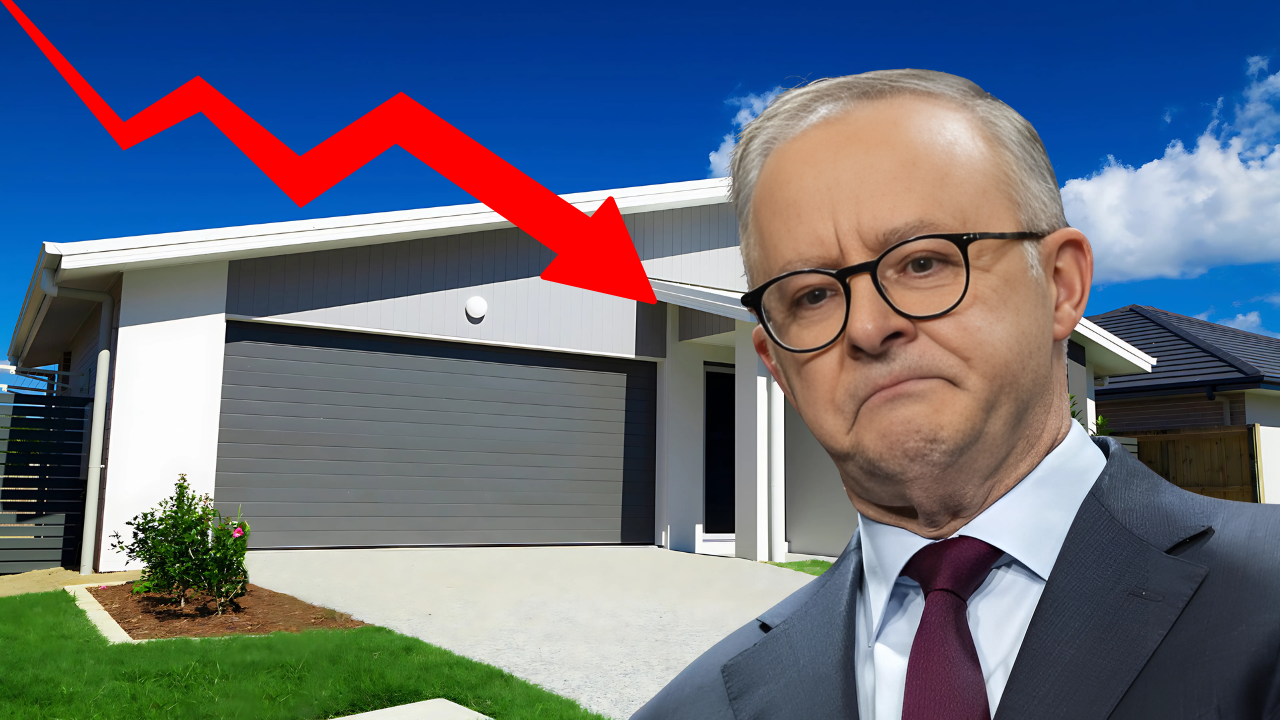The Shocking Truth About Australia’s Housing Market and International Students is now coming out. Listen up, because what I’m about to tell you might completely change how you think about Australia’s housing crisis. Everyone keeps blaming international students for your skyrocketing rent, but the numbers tell a completely different story.
Here’s what really happened: home prices rose by 4.9% in 2024, while rents increased by 4.8% in 2024 and 1.7% in early 2025. Meanwhile, the government just announced they’re capping Australia international students housing market participation to 270,000 new enrollments for 2025.
But here’s the kicker – this won’t fix your rent problem at all.
The Numbers Don’t Lie: Students Aren’t Your Real Problem
I’ve been digging through the latest data, and what I found will blow your mind. International students make up only 4% of Australia’s rental market, while domestic students actually comprise 6% of rental demand.
Think about that for a second. If we’re going to blame students for housing shortages, shouldn’t we be talking about Australian students first?
The Australia international students housing market debate has become a political football, but the real villain is hiding in plain sight.
When Did Your Rent Actually Start Going Crazy?
Here’s where it gets really interesting. Rental prices began rising in 2020 during COVID-19 when international students had largely returned home. Between 2019 and 2023, median weekly rents increased by 30% while student visa arrivals actually decreased by 13%.
So your rent was already going through the roof when there were fewer international students in the country, not more!
The Real Culprits Behind Australia’s Housing Nightmare
Population Explosion: The Elephant in the Room
Australia’s population has increased by 8.7 million people (46%) this century, with one person arriving to live in Australia every 44 seconds. This isn’t just about students – it’s about massive population growth outpacing housing construction.
The government’s own data shows only 177,000 homes were built in 2024, far below the 223,000 needed to meet demand.
Construction Industry Chaos
The construction sector is in serious trouble. Only 168,050 homes began construction in the year to Q4 2024, 71,950 (30%) lower than the annual run rate of 240,000 required to reach the government’s housing target.
Labor shortages, material cost increases, and financing difficulties have created a perfect storm that has nothing to do with international students.
Household Changes Nobody Talks About
The decline in average household size contributed to around 120,000 additional households being formed during COVID. More people working from home means fewer shared living arrangements and higher demand for individual properties.
The 2025 Student Cap: Political Theatre or Real Solution?
What’s Actually Being Capped
The government will cap new international students at 270,000 in 2025, with publicly funded universities getting around 145,000 spots, vocational training 95,000, and private institutions sharing 30,000 places.
This still requires parliamentary approval, and the Senate needs to pass legislation to allow the government to set enforceable enrollment caps. The government jumped ahead of its legal authority because the process of recruiting students for next year is already underway.
The Prestige Universities Get Hit Hardest
Group of Eight universities like Sydney, Melbourne, Queensland, and ANU will have to cut their international student intakes below 2023 and 2024 levels. These prestigious institutions with international concentrations above 37% will only keep 50% of their growth.
This means the universities that actually attract the best students are being penalized most severely.
Why This Won’t Help Your Rent Situation
Here’s the reality check: the number of new international students in 2025 could easily be much lower than 270,000 due to nine migration changes already implemented that made Australia less attractive to students.
Visa application fees more than doubled to $1,600, and processing times have increased dramatically. The market is already self-correcting without government intervention.
The Economic Reality: What We’re Actually Losing
The Billion-Dollar Mistake
International education contributed $24.7 billion to the Australian economy in 2022-2023, making it the fourth largest export after iron ore, gas, and coal. The proposed caps threaten potential job losses estimated at around 22,000 and a $4.1 billion economic hit by 2025.
Meanwhile, your rent problem persists because the real issues aren’t being addressed.
University Funding Crisis
These caps will particularly devastate research capabilities. Universities rely on international student fees to cross-subsidize research activities and maintain their global competitiveness.
We’re literally shooting ourselves in the foot economically while pretending to solve a housing problem.
The Current Rental Market Reality Check
How Bad Is It Really?
The 2024 Rental Affordability Index shows that only 13% of properties are accessible to median income households. The average rental price now hovers around $650 per week, while rental vacancy rates remain at just 1.4%.
All major cities—Sydney, Melbourne, Brisbane, Perth, and Adelaide—have recorded their worst affordability scores since the Index’s inception. Perth saw the steepest decline at 13%, followed by Adelaide at 8%.
The Satisfaction Crisis
Here’s something that really hit me: a record-low 22% of Australians were satisfied with housing availability in 2024, while a record-high 76% were dissatisfied. Among 18-34 year-olds, satisfaction dropped to just 16%.
Young people are facing an uphill struggle to get onto the housing ladder, with the average age of a first-time buyer rising to around 35 from 25 since 2000.
The Geographic Reality
While international students represent only 4% nationally, they’re concentrated in specific areas. In 73% of Local Government Areas, international students comprise less than 1% of renters.
However, in 27% of LGAs (primarily in capital cities), concentrations exceed 1%, with some inner-city areas reaching over 10%. This creates localized pressure points but minimal national impact.
Student Accommodation: The Infrastructure Disaster
The Bed Shortage Nobody Discusses
Current purpose-built student accommodation provides beds for only 6% of higher education students – approximately one bed per 15 students. PBSA providers report a 16:1 student-to-bed ratio, highlighting severe accommodation shortages.
Only 7,770 new beds are expected to come online by 2026, nowhere near what’s needed.
The Vicious Cycle
Without proper student accommodation, more students are forced into private rental markets. But instead of building more purpose-built housing, we’re just reducing student numbers.
It’s like trying to solve traffic congestion by banning cars instead of building more roads.
What’s Really Driving Your Rent Increases
The Construction Bottleneck
The State of the Housing System 2025 report estimates that Australia will build 938,000 homes during the 5-year National Housing Accord period, which ends in mid-2029 – 262,000 homes short of the 1.2 million target.
The single biggest constraint isn’t student demand – it’s that many housing projects are not commercially viable given current land, financing, and development costs.
Interest Rate Impact
Financial markets expect the Reserve Bank to slash interest rates four more times this year, with the cash rate expected to fall to 3.10% by end of 2025. Lower rates will increase borrowing capacity and buyer demand, lifting prices further.
Plus, Labor’s 5% deposits for first-time buyers coming January 1, 2026, will boost demand and prices even more.
The Inflation Connection
Rent rises are not only hurting households but also exacerbating inflation. Interestingly, the ACT introduced rent increase limits in 2019, and rental affordability has improved there since.
This suggests rent control measures might be more effective than student caps.

The Political Games Being Played
Election Year Scapegoating
With Australia’s federal election scheduled for May 2025, immigration and housing have become central political battlegrounds. The opposition has proposed even stricter limits, suggesting a reduction to 240,000 annual enrollments if they win.
It seems clear that all political parties are prepared to make immigration a key issue, fighting the election in part over more restrictive immigration settings.
The Blame Game
Group of Eight Australia’s Chief Executive Vicki Thomson poignantly stated: “The Government is making a critical mistake by using international students as a scapegoat to manage a short-term spike in migration and ease housing pressure”.
Politicians find it easier to blame foreigners than address complex structural issues in housing supply, construction industry challenges, and planning system inefficiencies.
Global Competition: What We’re Risking
Losing Our Competitive Edge
Australia accepts approximately 10% of the world’s international students, making it a major player in global education markets. Competitors like Canada, the UK, and US are watching Australia’s approach closely.
The cap could push students toward alternative destinations, potentially benefiting competitors who maintain open policies.
Long-term Reputation Damage
If Australian institutions are perceived as less accessible or if their ability to maintain high standards is compromised, international students may start looking elsewhere permanently.
We’re risking our reputation as a premium education destination for short-term political gain.
The Bottom Line: What This Means for You
Your Rent Isn’t Getting Cheaper
Here’s the harsh reality: rent growth is expected to slow but rental conditions will stay tight due to low vacancy rates. The fundamental supply-demand imbalance remains unchanged.
Renters are spending approximately 33% of annual pre-tax income on rent as of September 2024 – the highest portion since tracking began in 2006.
The Real Solutions We Need
Instead of scapegoating students, we need to:
- Dramatically increase housing construction through streamlined planning systems
- Invest in social and affordable housing at scale
- Address construction industry capacity and productivity issues
- Build more purpose-built student accommodation to reduce private rental pressure
- Consider rent increase limits like the ACT has successfully implemented
What You Can Do
While waiting for real solutions, here are practical steps:
- Network with community groups for hidden rental opportunities
- Use AI-driven platforms like Soho.com.au for better property matching
- Consider share housing to distribute rental costs
- Stay informed about market trends and policy changes
The Uncomfortable Truth
The Australia international students housing market debate has become a distraction from the real issues. We’re facing a housing supply crisis that won’t be solved by reducing international student numbers.
The data is clear: students aren’t the primary driver of your rent increases. Population growth, construction bottlenecks, changing household preferences, and economic factors are the real culprits.
Frequently Asked Questions
Q: Will the 270,000 student cap actually reduce rental prices?
A: No, because international students comprise only 4% of the rental market, while fundamental supply shortages remain unchanged.
Q: When did Australia’s rental crisis actually begin?
A: Rental prices started rising in 2020 during COVID-19 when international students had largely left the country.
Q: How much do international students contribute to Australia’s economy?
A: International education contributed $24.7 billion to the Australian economy in 2022-2023, making it the fourth largest export.
Q: Which universities will be most affected by the student cap?
A: Group of Eight universities like Sydney, Melbourne, and ANU will face the biggest cuts to their international student programs.
Q: What percentage of rental properties can median income households afford?
A: Only 13% of properties are accessible to median income households according to the 2024 Rental Affordability Index.
Q: How many homes is Australia short of its building targets?
A: Australia will fall about 375,000 homes short of the nationally agreed target of building 1.2 million new homes by mid-2029.
Q: What’s the average age of first-time home buyers now?
A: The average age has risen to around 35 from 25 since the turn of the century.
Q: How much of their income do renters spend on housing?
A: Renters spend approximately 33% of their annual pre-tax income on rent, the highest portion since tracking began in 2006.
Read More : www.rrdb.com.au

